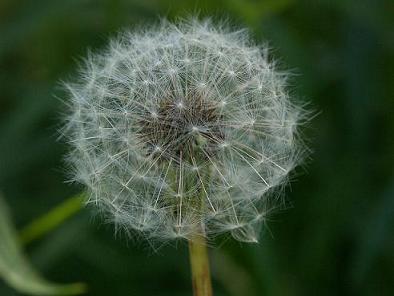|
|
Dandelions are commonly seen in lawns, by the sides of driveways and in grassland in May and early June. Smaller patches can be observed throughout the summer. Plants range between 5 and 40 cm in height. |
|
|
Before they flower they can be recognised by their distinctive circle of leaves.
|
|
|
Dandelions have strongly toothed leaves. Their name derives from the French ‘dent de lion’ or lion’s teeth. |
|
|
The flower. Although distinctive it is often confused with Coltsfoot, Hawkweed and other bright yellow, many petalled flowers.
|
|
|
One of the key differences between Dandelions and other flowers like it is that it has a smooth (or slightly hairy) leafless stem which is hollow. When the stem is snapped the sap which comes out will stain your hands brown.
|
|
|
The Dandelion seedhead, or 'clock'. Dandelions spread by windblown seeds and once established can live for up to five years.
|
